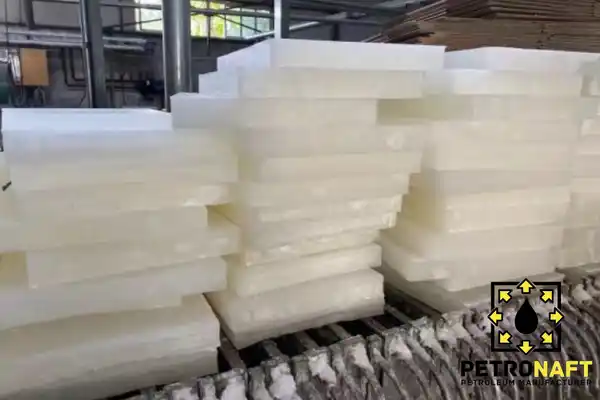Content Overview
Learn about paraffin, its various forms, and uses in industries such as healthcare, while also understanding the difference between paraffins 1% and 3%
What exactly is paraffin?
In a nutshell, paraffin is a petroleum material that is available in both liquid and solid forms on the market. Solid paraffin, often known as paraffin wax, has a gel condition. In reality, when we speak about paraffin wax, we are referring to solid paraffin. Oral paraffin can be utilized in the treatment of several disorders as well as in the medical business for purposes such as body photography. Paraffin is utilized in the industry instead of lubricants, and in the health business in a variety of lotions and sunscreens. Paraffin wax is essentially a white, odorless, tasteless wax with a typical melting point of 46 to 68 °C (115 to 154 °F) and a density of around 900 kg/m3. Water does not dissolve paraffin, although it is soluble in solvents such as ether, benzene, and certain esters.
The difference between paraffins 1% and 3%
When purchasing paraffin, keep in mind that color, hardness, and fat content are all crucial factors to consider. These factors can have a significant influence on paraffin prices. For example, the price of paraffin with 1% fat is greater than that of paraffin with 3% and 5% fat, indicating that the difference between paraffins can be found in their fat content. In general, the melting points, freezing points, color, and softening points of 1, 3, and 5% oil paraffins vary. Furthermore, the lesser the quantity of paraffin oil, the closer the hue is too white. Before purchasing, make careful to understand the distinctions between paraffin and its many varieties.
Paraffin uses
It’s noteworthy to note that paraffin is utilized in almost every sector, from cosmetics to food. The following are some of the applications for paraffin:
Making candles
Coating for wax paper
The use of paraffin in the candle slows its melting speed, and its fabrication and production are less expensive than other candles.
Cosmetics industry
Making a variety of eyebrow pencils
Making colored pencils
Cosmetic and therapeutic wax manufacturing
Cosmetic moisturizers, such as Vaseline
Making lubricants (lubricants are substances that are used to reduce friction between moving surfaces and make them move with each other easier and smoother than usual)
Food industry
Colors that are used in the manufacture of sweets and can be eaten.
Coating for hard cheeses such as Edam.
Many cans and bottles must be sealed.
Antiozonant: A combination of paraffin and other chemicals used in rubber compounds to avoid cracking.
Anti-mildew and anti-dust agent
Wavy wax compounds are used to eliminate surface imperfections.
Solid fuel for multi-fuel rocket engines
Casting industries
Used for concrete rails and slots.
It can keep polished steel and iron surfaces from rusting.
Mic decreases guitar pickups
Ski wax mixture
A thickening agent used in several Crayola paintballs.

Paraffin manufacturing and usage history
It’s worth noting that a German scientist developed paraffin wax in the 1830s. He attempted to create a technology that might be used to break down and purify the waxy compounds naturally present in oil.
Meanwhile, he unintentionally discovered paraffin. Paraffin is a significant advancement in the candle business since it is clean and effective, as well as cheaper and more affordable than other candle raw ingredients. Keep in mind the distinctions between paraffin and its many forms.
Paraffin has a low melting point at first, but with the addition of stearic acid, it hardens and this flaw is addressed. The expansion of the meat and fat packing business resulted in a rise in paraffin production in the early twentieth century, which was followed by an increase in stearic acid production.
How is paraffin made?
The basic ingredient used to make paraffin is loose wax, which is a combination of oil and wax. The first stage in creating paraffin wax is defatting or dewaxing (removing oil) the loose wax.
The procedure of crystallization is used to separate oil. Typically, loose wax is melted, then combined with one or more solvents such as ketones and cooled. The wax crystallizes from the solution as it cools, leaving just the oil.
This combination is separated into two solid and liquid portions, which are filtered into the solid part (wax with some solvent) and the liquid part (oil and solvent). The resultant product of the distillation process is known as product wax (press wax).
The lesser the proportion of oil in the wax, the longer it will take to cleanse. Some wax products need further processing to eliminate color and odor.
Finally, the wax can be combined to obtain desired qualities such as melting point and penetration. The shape of paraffins can vary; for example, paraffin wax is available in liquid and solid forms.
With the introduction of paraffin, a new approach called paraffin therapy has gained popularity. Paraffin therapy is a therapeutic approach for conditions such as arthritis and damaged skin. The heat action of this approach accelerates the interchange and synthesis of physiologically active chemicals.
As a consequence, regeneration processes are encouraged and capillary functioning is enhanced during paraffin treatment. The heat from paraffin also helps to relieve joint discomfort and promote blood flow in the region where it is applied. Heat removes a lot of water from the skin and moistens the epidermal layer.
This approach is beneficial for decreasing the symptoms of skin aging. Its effects include restoring the skin’s capacity to retain moisture, opening pores, enhancing perspiration and sebaceous glands, stimulating blood circulation, and relaxing.
Conclusion
Because of its many uses, paraffin is one of the most sought-after industrial compounds. Many organizations buy and sell this material, but you must buy from a recognized source to acquire a quality and assured product.
Also, keep in mind that the price of paraffin is affected by the volume of client demand and the quantity of consumption. The kind of paraffin also influences its pricing.
Purchasing from Petro Naft
For more detailed information and to purchase the product discussed in this article, please visit the dedicated product page below. Alternatively, use the various communication channels provided on our site to register your purchase inquiry or take advantage of our expert guidance.
Prepared by the PetroNaft Co. research team.



